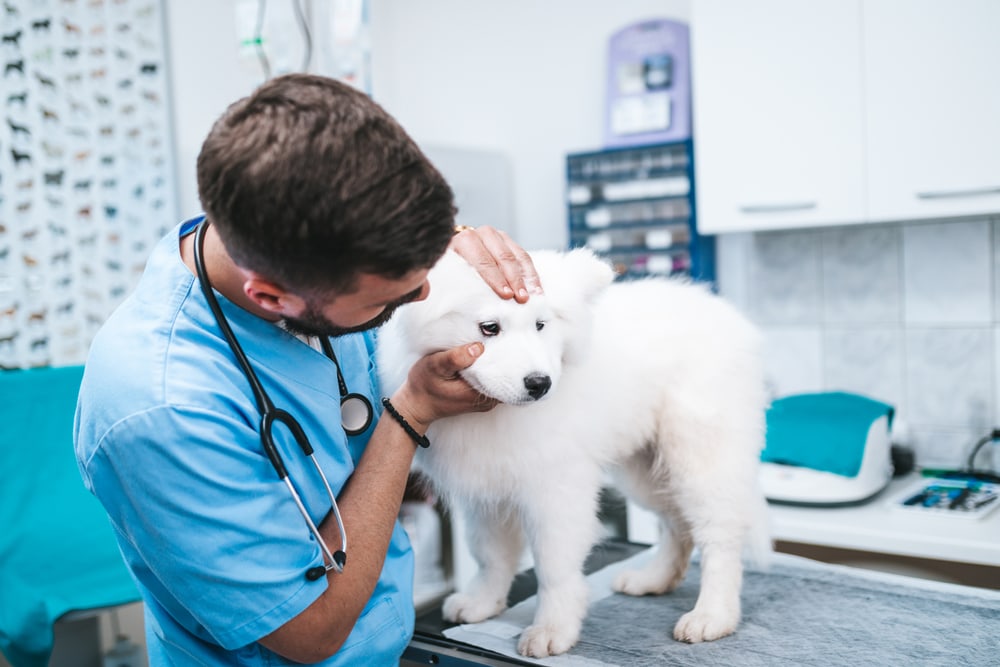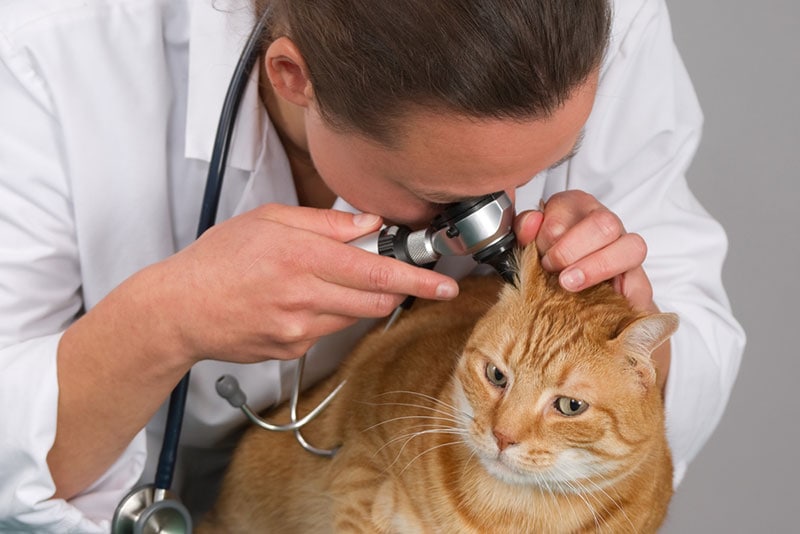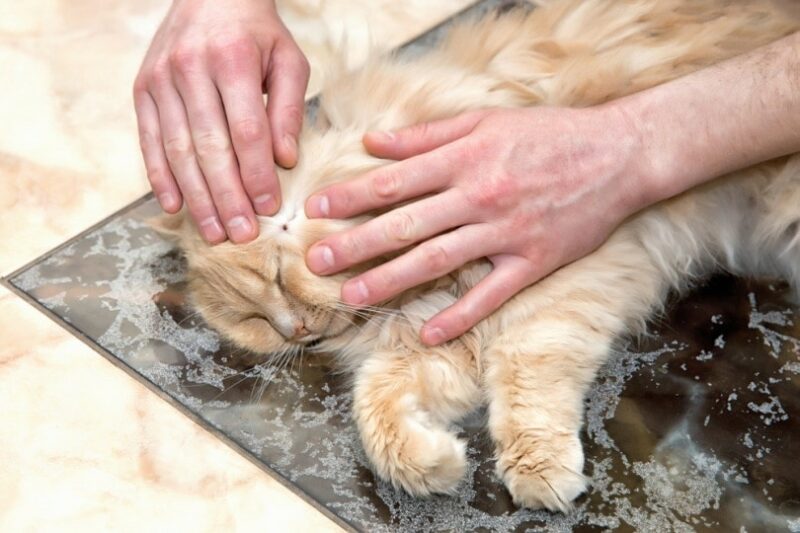Ear Mites in Cats: Signs, Causes & Care (Vet Answer)

Updated on
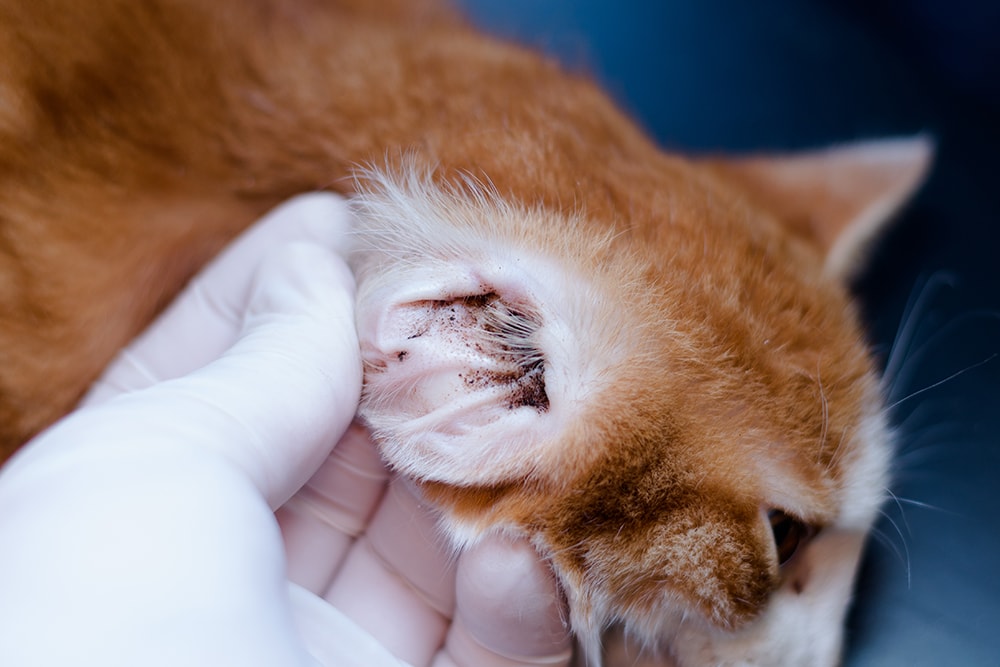
Click to Skip Ahead
Have you ever noticed how some things can make your skin crawl and itch just by hearing about them? Flea infestations, mosquito swarms, bedbugs, or head lice…and if you’re a cat, you might want to add ear mites to that list. These tiny little beasts are a real pain in the neck, so to speak, and because they are found all over the world, the chances are that if you have a cat, you will come up against them at some point. Ear problems aren’t all that common in cats, and when they do occur, ear mites are often the cause.
Ear mites love nothing more than to find themselves a nice warm ear canal to inhabit, where they feast on ear wax and skin oils, driving your cat mad with itching, and leaving a delightful mess in their wake. Fortunately, ear mites are quite easy to deal with, but you need to get on top of the problem before they cause serious damage and infection.
Keep on reading for some more information about ear mites – how to recognize them, how to treat them, and best of all, how to prevent them.
What Are Ear Mites?

Unsurprisingly, ear mites are parasitic mites that inhabit the ears of many small mammals, including ferrets, rabbits, dogs, and most commonly, cats. Otodectes cynotis, a microscopic member of the arachnid class, is highly contagious, and can cause itchy skin and rashes all over the body, but will preferably seek out the ear canals to call home, because this is one area that cats can’t get their tongues into!
Although they can survive for brief periods in the environment, ear mites typically spend the entirety of their life and reproductive cycles (egg-larva-nymph-adult) on the host. They are spread from animal to animal via direct contact, or by contact with bedding or areas that have been inhabited by infected animals.
It is quite common for cats in shelter environments or overcrowded conditions to have ear mites, as they are chronically exposed to infection, so if you are bringing home a rescue cat, ask about any ear mite history, and whether or not they have had any treatment or prevention.
What Are the Signs of Ear Mites in Cats?
Ear mite infestations range from mild to severe, with the following clinical signs:
- Extremely itchy ears
- Dark brown to black ear discharge (crumbly or moist)
- Hair loss, scabbing, or bleeding of the skin around the ears
- Brownish discoloration of the fur around the ears and on the paws (from cleaning)
- Head shaking
Ear mites can lead to some secondary problems as well, including:
- Aural hematoma – a bloody fluid pocket between the ear skin and cartilage.
- Otitis (ear infection). If left untreated, otitis can progress into the middle ear and cause issues with hearing and balance, which can be permanent.
How Do I Know My Cat Has Ear Mites?
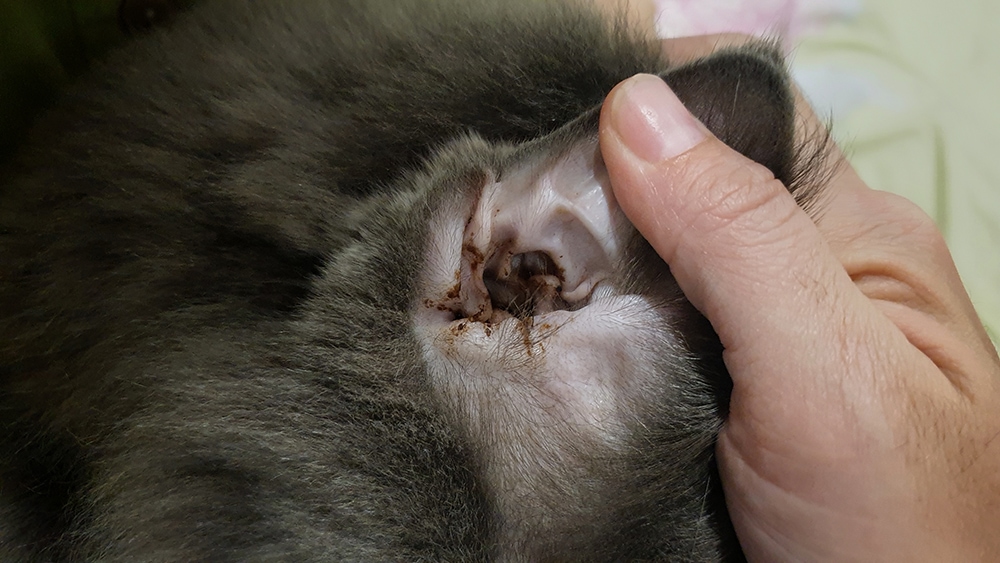
Ear mites are tiny, so you aren’t going to be able to spot them like you would a flea, but you might notice a little bit of movement if you look very closely at the nasty debris in your cat’s ear. If your cat is showing any of the above signs, you’ll need to get them an appointment with your vet so they can perform a thorough otoscopic examination. They’ll be able to look at a sample of the discharge from your cat’s ear to look for mites under the microscope, as well as check for any secondary yeast or bacterial infections.
How Do I Care for a Cat with Ear Mites?
Your vet will show you how to clean your cat’s ears and apply a medicated treatment to get rid of the mites. It is important that you attend any follow up appointments so that your vet can make sure the infection is completely gone before you stop treatment, especially if there are any bacterial infections as well.
If you suspect that your cat has mites or an infection, it is important not to put any cleaners or drops into the ear without first checking with your vet. If there is any damage to the eardrum, some ear preparations can cause permanent damage and hearing loss.
Depending on how severe your cat’s ear mite situation is, you might be going home with
- Ear cleaner
- Ear drops
- Anti-inflammatory medication
- Pain relief
- Elizabethan collar – this is a very useful piece of equipment to stop your cat from doing some serious damage to themselves
Can I Stop My Cat From Getting Ear Mites?
You may not always be able to stop your cat from becoming exposed to ear mites, but you can definitely minimize their chances of becoming a host for these itchy parasites.
Regularly clean bedding
Dispose of any beds/blankets that may have been exposed to mites, or put them through a long wash at 60oC.
Keep an eye on their ears
Most of the time, our cats do a great job at keeping their ears clean, and don’t require much intervention from us. However, some cats are prone to waxy ears, so an ear clean once a week or so can be a good routine to get into. If they need to be cleaned more regularly than this, they need to be checked by your vet as there is likely more going on than just a bit of wax.
If you want to use an ear cleaner, ask your vet what they would recommend. If using a cleaning solution, apply the solution to some cotton wool to clean the ear; don’t put the solution into the ear canal. One of the easiest and safest ways to avoid this is by using ear wipes.
Use the right parasite prevention
Many flea & tick products for cats will also help prevent ear mites, so check the label to make sure you’re covering everything.
- IMPORTANT: These are spot-on treatments that are applied to the skin on the back of the neck, not into the ears.
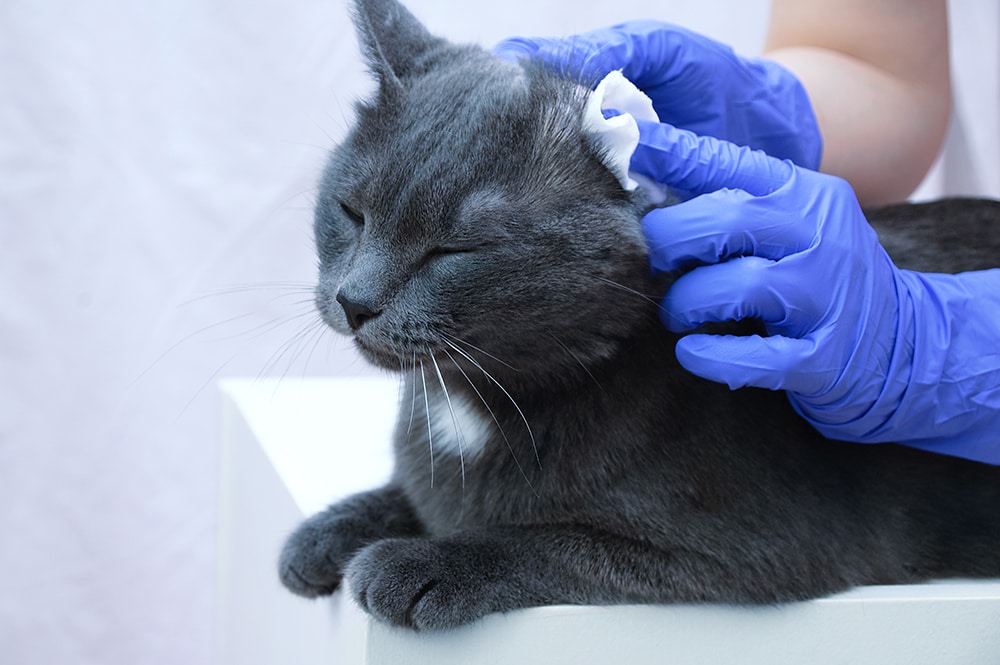
Frequently Asked Questions (FAQ)
Can humans get ear mites?
Technically, yes, ear mites can use us as a temporary host, but they won’t want to stay. Humans that have been in contact with ear mites may develop an itchy rash, but in most cases, the mites will abandon a human for a furry host as soon as possible, and won’t survive beyond your next shower. Ear mites in human ears have been reported, but are extremely rare.
Are ear mites dangerous?
Not really – they don’t spread disease or cause serious illness, BUT if left untreated, they can lead to more serious ear damage, infections, balance issues, even hearing loss.
What if an ear mite infestation won’t go away?
If the treatments your vet has prescribed or recommended aren’t getting rid of the problem, there is likely more going on, and it’s time to schedule a follow up with your vet. Alternatively, your cat may be becoming reinfected from somewhere. If your cat goes outside, or has any dark little corners they like to hide in, you may need to go on a reconnaissance mission to see if you can find the source of the problem.
However, if you completely treat a case of ear mites and follow it up with a preventative treatment, you should be successful in keeping them at bay.
Does pet insurance cover ear mite infestations?
Depending on the level and type of pet insurance you have, most insurance policies will cover any illness or injury that occurs after the initial exclusion period, unless they have had a case before the policy started. However, you will probably find that treating a case of ear mites won’t set you back too much, so you might not even need to make a claim.
Conclusion
The ear mite, Otodectes cynotis, is ubiquitous throughout the world, and a parasite that most cat parents will need to deal with at one time or another. Fortunately, these pesky parasites are fairly easily dealt with once you’ve got the right diagnosis and treatment from your vet, but they can lead to more serious ear problems, so they should not be ignored.
If you notice your cat scratching their ears or shaking their head, or you’ve spotted some nasty looking discharge from their ears, it’s best to get them booked in with your vet so you can get on top of the problem before it becomes a real headache, for you and your feline friend.
Featured Image Credit: Todorean-Gabriel, Shutterstock




